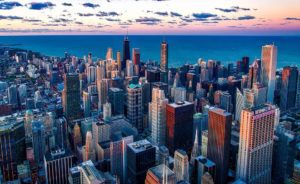Above the Level of Fire Department Pumping Capabilities

We are entering a new era where the height of a building is being redefined and are moving from performance-based design into the regulated world of prescriptive codes and standards. For many decades, we have classified the height of a building based on fire department access limitations. A building was either a high-rise or it was not. That designation has been largely based on one basic concept, the fire department ladder capabilities or reach, which for many years has been 75 feet. The International Building Code (IBC) defines a high-rise as a building with an occupied floor greater than 75 feet above the lowest level of fire department vehicle access. Any building exceeding that 75-foot threshold was then classified as a high-rise and subject to meet the prescriptive requirements of a high-rise building. This concept was sufficient for many years with only a limited numbers of skyscrapers built in major cities, all of them being built to performance-based concepts with local approval.
Tall Buildings and Redundancies
In today’s modern developing landscape, we are seeing many buildings constructed at that in-between level, somewhere between a high-rise and up to the skyscraper level. This is generating new questions about building classifications. What if the building is somewhere beyond the level of fire department pumping capabilities? What redundancies should a building be equipped with when it surpasses the reach of that 75-foot access mark and is no longer supported by the redundancy of fire department hose lines; when pumped from the fire department connection, at the level of access or the street?
Legacy Skyscrapers vs. Modern Skyscrapers
The Empire State building stood as the tallest building in the entire world for many decades at 1,454 feet. Now we can visit One World Trade Center and look down at the Empire state building from 1,776 feet. When the Jeddah Tower in Saudi Arabia is completed, it will be the tallest building ever built, well surpassing 3,000 feet. This trend of upward construction has been growing and expanding into these amazing heights, but we continue to add buildings at levels that fall somewhere between that high-rise classification and today’s skyscrapers. How do we define them and what prescriptive requirements will these buildings be required to meet?
From Performance to Prescriptive
We have learned from skyscrapers built to performance-based designs and have started to transition those lessons into design requirements that follow a more traditional prescriptive manner. One significant lesson is that buildings can be above the level of Fire Department Pumping Capabilities, falling somewhere between 75 feet and 3,000 feet. The IBC has adopted specific prescriptive requirements for fire protection in buildings that exceed 420 feet in height, including additional water supplies and building fire pumps for redundancy, along with host of other more restrictive requirements than the high-rise classification. The water supply and additional pump requirements comes from the fire department pumps inability to supply the system demand from the street fire department connection (FDC), as the redundant supply in a building above 420 feet. Hence, can the fire department supply system demand from the fire department connection in a building that is 419 feet?
This concept is also found in NFPA 20, Standard for the Installation of Stationary Pumps for Fire Protection, defined as, Very Tall Buildings. This term is used to describe a high-rise building where the water demand exceeds the pumping capability of the fire department. While that level remains a performance standard, designated by each fire department, the level is needed in the design phase of a building to identify an appropriate level of required redundancy.
Pumping Challenges
The fire department must also understand what that limit indicates for fire ground operations and the new and unique challenges it creates. The potential for exceeding building or fire department equipment system maximum working pressures exists. Additionally, the complexity of system design in these buildings could easily lead to catastrophic complications without proper understanding of the fire protection systems that are installed.
The question is not always can the fire department figure out some creative way to pump the building system demand pressure from the FDC, but what is their true pumping capability and how far can they push those limitations safely?
